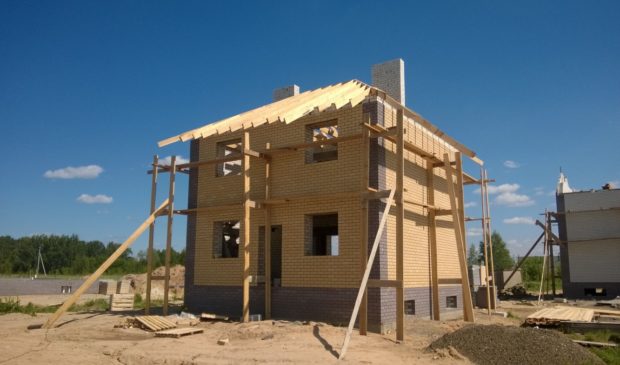Environmental Commission recommends revising green building standards
Tuesday, February 25, 2020 by
Jessi Devenyns Green buildings are intended to be superior constructions built with environmentally sustainable materials and design. While not required, the city encourages this type of construction on a voluntary basis through Austin Energy’s Green Building Program, which rewards builders for green choices.
Although some baseline prerequisites are required for a development to be eligible for one-star green building status, prohibiting toxic chemicals is not part of these fundamental requirements.
The Environmental Commission, however, unanimously recommends that Austin Energy and other city entities restrict the use of toxic chemicals in construction or redevelopment of projects. The commission additionally recommends that the Green Building Program revise its standards to actively encourage nontoxic and less toxic materials in its guidelines.
“I think it is outrageous that we accept any toxic items in our buildings where people are there,” Commissioner Mary Ann Neely said at the Feb. 19 meeting of the Environmental Commission.
Chair Linda Guerrero agreed that limiting the use of toxic chemicals is important for the health and safety of residents. “There are just chemicals everywhere,” she said.
Heidi Kasper with the Green Building Program said requiring the use of nontoxic building materials as a prerequisite rather than an opportunity for builders to earn points is a nuance that avoids “(setting) us up for a much more adversarial approach with those clients.”
Austin’s voluntary sustainable construction program evaluates single-family, multifamily and commercial buildings across categories, including materials used, energy efficiency, water quality and transportation options. The chemicals used in these products are not considered to be a part of the baseline evaluation.
Texas House Bill 2439, from the 86th Legislature, prohibits cities from regulating building materials if the material is approved for use by a national model code. The result is that Austin Energy may not ban the use of certain materials that are known to be toxic to human health if they are federally legal.
Local environmental activist and researcher Paul Robbins disagreed that Austin Energy cannot preclude these materials under its Green Building Program since the program is voluntary. He said even if the program does not prohibit the use of these materials, “I propose that the program illuminate toxic building materials when there are cost-effective alternatives.”
Kasper told the commission that it can be challenging to identify the chemicals used in construction materials as ingredients vary from product to product. She pointed to formaldehyde, which is no longer used in fiberglass insulation yet is still used in composite wood. Kasper said that while Austin Energy is working to discourage the use of these chemicals, it is difficult because many others remain in widespread use, including phthalates and other plasticizers, and developers are not necessarily aware of their existence.
To educate builders about material selection, Austin Energy tracks a variety of toxic chemicals on a red list developed by the International Living Future Institute. This list allows the utility to keep track of toxins like formaldehyde and volatile organic compounds in paints that the industry is phasing out and provide guidance to builders when selecting materials.
Commissioner Ryan Nill suggested giving builders that use toxic materials a negative score instead of awarding points for not using them. He said this approach offers an option to“quasi ban” the toxic materials.
Kasper explained that while the program does not negatively weigh the use of materials containing toxins, there have been improvements in the industry that limit their use as certain products and materials fall out of favor with builders and the public.
“We are evolving our standard over time; the codes are evolving over time. So they’re committing to building to an unknown, above-code standard years out,” said Kasper. “The two- and three-star projects you are seeing today are not the same as a two- or three-star project built six or 10 years ago.”
The Austin Monitor’s work is made possible by donations from the community. Though our reporting covers donors from time to time, we are careful to keep business and editorial efforts separate while maintaining transparency. A complete list of donors is available here, and our code of ethics is explained here.
You're a community leader
And we’re honored you look to us for serious, in-depth news. You know a strong community needs local and dedicated watchdog reporting. We’re here for you and that won’t change. Now will you take the powerful next step and support our nonprofit news organization?










